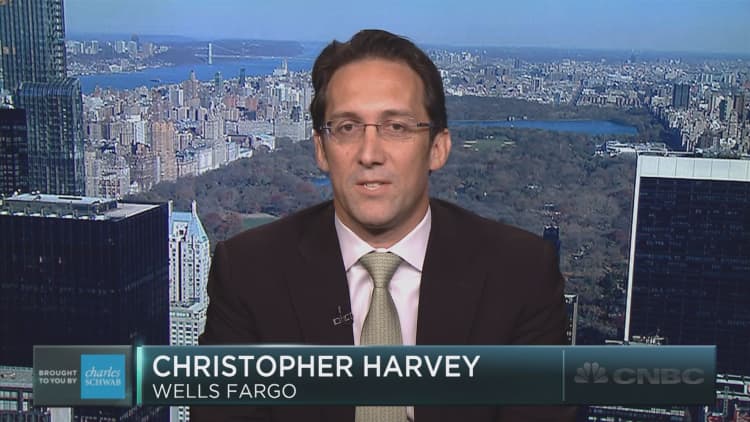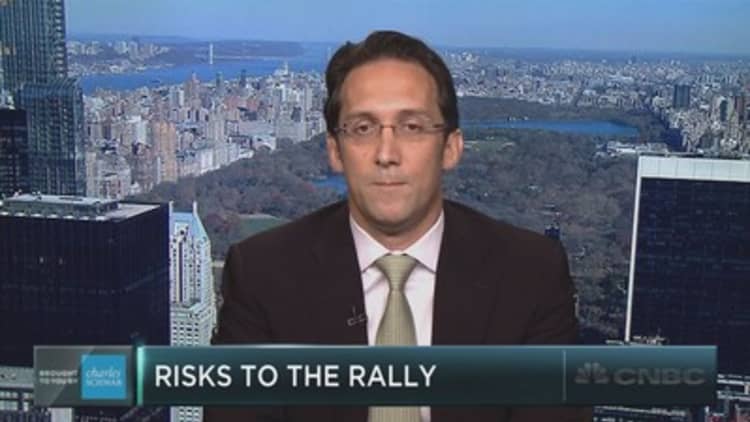
With just about seven weeks left until the end of the year, Wells Fargo Securities has just raised its year-end S&P 500 target to reflect what its top equity strategist calls a quantitative easing-type phenomenon gripping stocks.
Christopher Harvey, the firm's head of equity strategy, is seeing the rising popularity of index funds and ETFs changing the dynamics of the bull market. He contends these passive investing instruments have been creating upward pressure on stock prices, and that's been a major reason why stocks have rallied so sharply in 2017.
"It's very similar to QE." Harvey said Wednesday on CNBC's "Trading Nation." "With QE, you took a certain part of the Treasury market out of circulation. Now what you're doing is you're taking a good part of the equity market out of circulation, and you're upsetting the supply and demand dynamics. There are fewer natural sellers."
Wells Fargo's new 2017 forecast calls for the to reach 2,636, which reflects about a 1.9 percent gain from current levels. The firm started the year with a 2,475 year-end target, which would have come in about 4 percent short if the year was to end now.
"We don't see a lot of bad news in the short term, and so we feel it's fairly justified," said Harvey, who became in charge of the firm's S&P 500 price target and earnings forecast in April. He acknowledges Wells Fargo's initial forecast was "too conservative" and the year has been exceeding expectations.
According to Harvey, there's still momentum in place for stocks to grind higher.
"No one wants to be the first one out of the pool. No one wants to de-risk at this point in time," Harvey added. "You have this mindset of FOMO — fear of missing out."
But that's Harvey's short-term forecast, and it shouldn't be confused with 2018. He's making it clear that investors will see fewer milestones as the markets get more expensive and risks grow.
"Inertia is becoming the most powerful force in the capital markets. A body of motion tends to stay in motion. And, that for us is a big concern. We want to see people more paranoid," Harvey said. "As the market goes higher, everyone is becoming more bullish. I think all the positives are starting to color people's beliefs and views. They're not looking at risk in the proper way."







